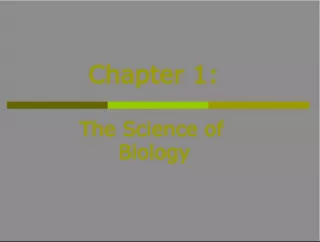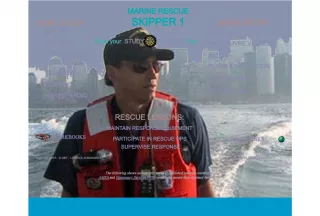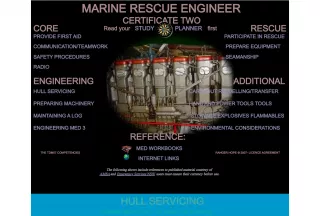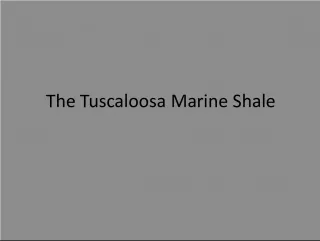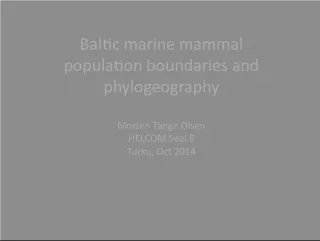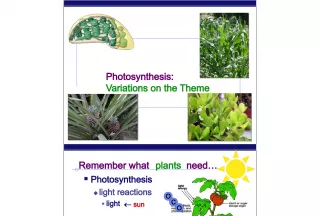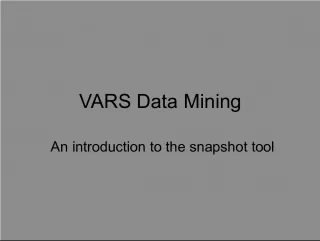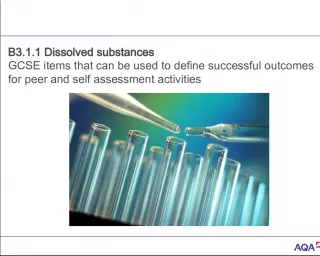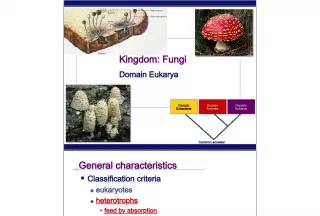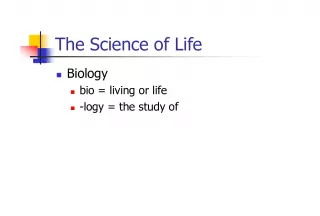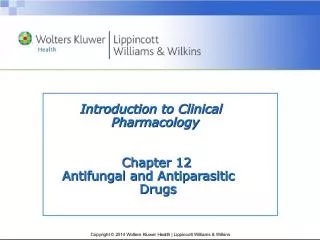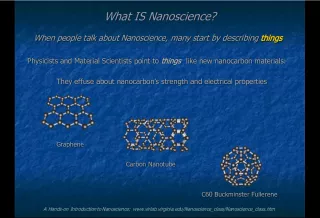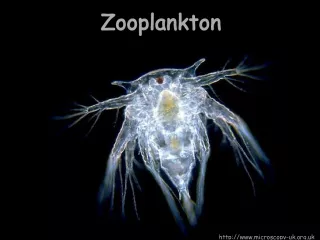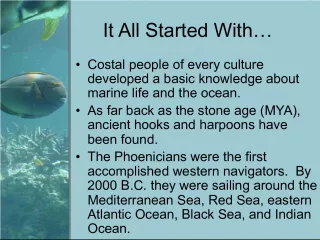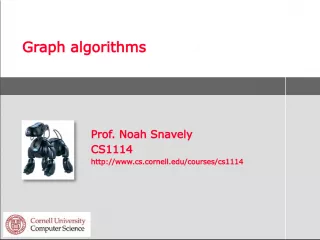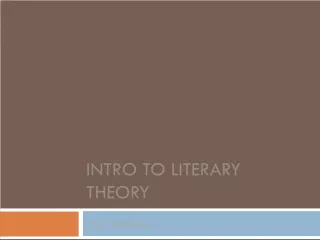Introduction to Marine Biology
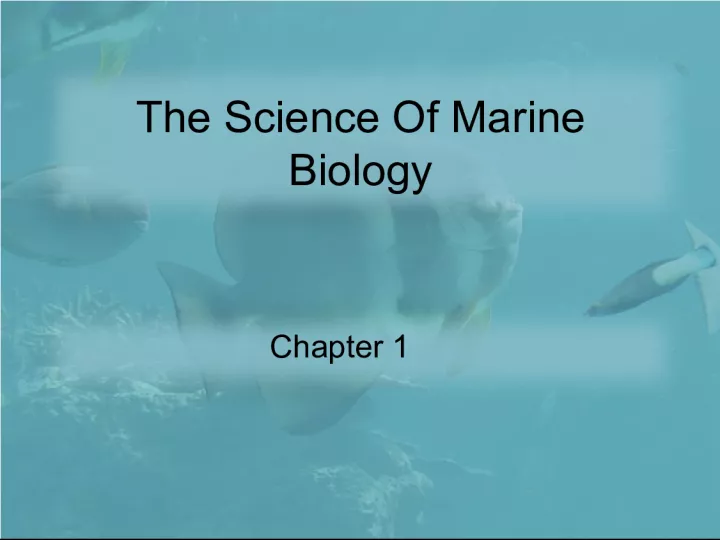

This chapter provides an overview of Marine Biology, which is the scientific study of organisms that inhabit the sea. Marine Biology encompasses a wide range of topics including the biodiversity of marine life, the ecology and behavior of
- Uploaded on | 1 Views
-
 amandakallio
amandakallio
About Introduction to Marine Biology
PowerPoint presentation about 'Introduction to Marine Biology'. This presentation describes the topic on This chapter provides an overview of Marine Biology, which is the scientific study of organisms that inhabit the sea. Marine Biology encompasses a wide range of topics including the biodiversity of marine life, the ecology and behavior of. The key topics included in this slideshow are . Download this presentation absolutely free.
Presentation Transcript
Slide1The Science Of MarineBiology Chapter 1
Slide2Introduction• Marine Biology is the scientific study of the organisms that live in the sea. • Some valuable things that the ocean offers us…Food, Medicine, Raw Materials, Recreation, Tourism, Problems caused by marine organisms.
Slide3Introduction• Why Study Marine Biology – To make full and wise use of the sea’s living resources – To solve problems that marine organisms create – To predict the effect of human activities on the life of the sea – To learn about the past as well as about ourselves
Slide4The Science of Marine BiologyPart 1 of 2
Slide5The Science of MarineBiology • Marine biology is a general science of biology applied to the sea. • It is very similar to biological oceanography, there is no real clear cut difference between them, so scientists often use the terms synonymously • Some of the vague differences between the two are…
Slide6The Science of MarineBiology • Marine biologists usually study organisms near the shore • Marine biologists study organisms from the organism’s point of view • Biological oceanographers often study organisms that are found in the deep ocean. • Biological oceanographers study organisms from the ocean’s point of view
Slide7The History of MarineBiology • Your first project will be based on the history of marine biology. You must make a timeline and a summary of the timeline. Project directions were given out yesterday.
Slide8Marine Biology Today• Oceanographic ships and shore- based laboratories are used by marine biologists. Many Universities also operate research vessels. • Many research vessels were built for other uses and were modified for research. More and more vessels are being made specifically for research.
Slide9Marine Biology Today• ROV – Remotely operated vehicles • AUV – Autonomous underwater vehicles • Marine animals can also be used by attaching sensors, oceanographic data can be collected throughout their life. • Automated instruments that stay put for long periods of time.
Slide10Figure 1.09
Slide11Marine Biology Today• Marine laboratories have come along way such as underwater laboratories that scientists can live in for weeks at a time. • New technology offers exciting opportunities for the study of the sea (computers and satalites) • Remote sensing technology is the technology used to study the earth and oceans from afar.
Slide12Figure 1.11
Slide13Marine Biology Today• Marine biologists use every available tool in their studies. However the ocean still remains a mystery.
Slide14The Scientific MethodPart 2 of 2
Slide15The Scientific Method• Science works. It has changed the world. Science continues to progress through the use of the scientific method (set of procedures that scientists use to learn about the world).
Slide16Observation: TheCurrency of Science • Senses are used to learn about the outside world – senses may be magnified (microscope, etc.) • Without objective observation science could not exist as it does today.
Slide17Two Ways of Thinking• Most of what is known about marine life has been learned through observation. • Induction: – Make observations (With no goal or preconception about the outcome) – These observations suggest a general conclusion • Observations – shellfish, shark, sailfish all have gills, they are also all fish. • Conclusion – all fish have gills – Why must scientists be careful when using induction?
Slide18Two Ways of Thinking• Deduction – General Statement about nature and predict what the specific consequences would be if this statement were true. Suppose induction were used to make the general “All marine animals have gills”. One could then reason that if all marine animals have gills and whales are marine animals, then whales have gills. This can be easily tested by observing a whale.
Slide19Figure 1.21
Slide20Testing Ideas• Both inductive and deductive reasoning lead scientists to make statements that might be true (hypothesis). • A critical part of the scientific method is that all hypothesis are testable.
Slide21Testing Ideas• Constructing the hypothesis – Hypothesis must be constructed in a way in which it can be tested. See figure 1.21 on the next slide. – Poor hypothesis: • Somewhere in the ocean there are mermaids. Can not be proved false. It is NOT testable!
Slide22Testing Ideas• Nature of Scientific Proof – No hypothesis can ever be proved true. In science there are no absolute truths. – When a hypothesis withstands many tests, it is accepted to be true (scientists do NOT prove hypothesis, they accept them) – The bottom line in science is observation NOT human ideas or beliefs.
Slide23Testing Ideas• Testing the Hypothesis – Scientists can not prove a hypothesis so they attempt to disprove it. – Most of the time it hypothesis are continually refined, modified or rejected, and alternative hypothesis are proposed as more observations are made. These observations are often based on experiments.
Slide24Testing Ideas– Suppose a marine biologist wanted to study the effect of temperature on growth of muscles. – Describe in detail what this marine biologist could do to test the hypothesis that muscles grow faster in warm water. Be sure to use a variable in your controlled experiment. – See figure 1.22
Slide25Figure 1.22a
Slide26Figure 1.22b
Slide27Testing Ideas• Scientific theory – A theory has past so many tests that it is generally accepted as true. Any theory may be overturned by new evidence.
Slide28Limitations to theScientific Method • No one is completely objective personal beliefs may skew observations in the laboratory. • Science can not decide what is beautiful. • Science can not tell humanity how to use the knowledge and technology that it produces. • These things depend on values, feelings, and beliefs which are beyond the scope of science.
